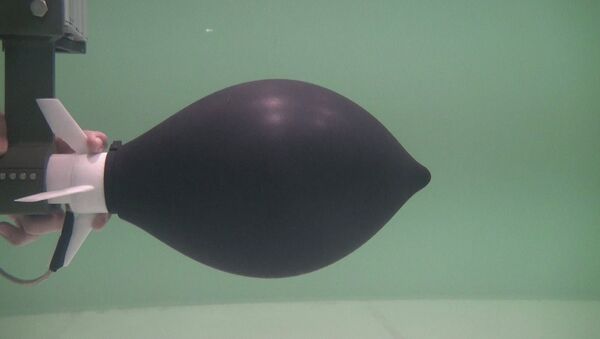Scientists from the University of Southampton, Massachusetts Institute of Technology (MIT) and the Singapore-MIT Alliance for Research and Technology constructed the elastic membrane around a 3D printed frame and a finned tail section that keeps the deflating “balloon” going in a straight line.
"Rigid bodies always lose energy to the surrounding water, but the rapidly shrinking form of the robot actually uses the water to help propel its ultra-fast escape, resulting in 53 per cent energy efficiency, which is better than the upper estimates for fast-starting fish," said lead author of the study, Dr Gabriel Weymouth, Lecturer for Southampton’s Marine and Maritime Institute
As the 30 cm body contracts it can accelerate up to ten body lengths per second.
"Man-made underwater vehicle are designed to be as streamlined as possible, but with the exception of torpedoes, which use massive amounts of propellant, none of these vehicles achieve speeds of even a single body length per second or accelerations of 0.1g, despite significant mechanical complexity.”
The researchers hope the design will have an impact on the future of automatic underwater vehicle (UAV) design.


